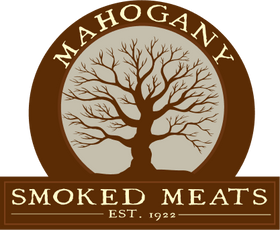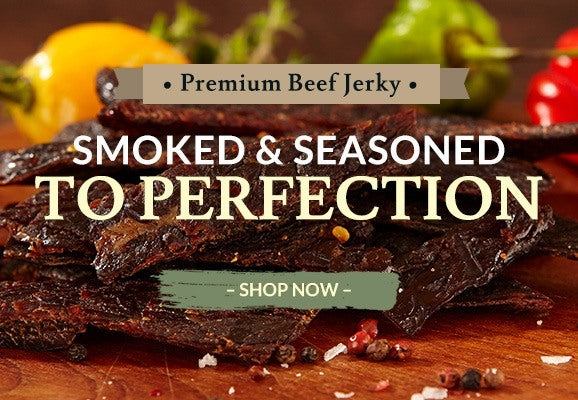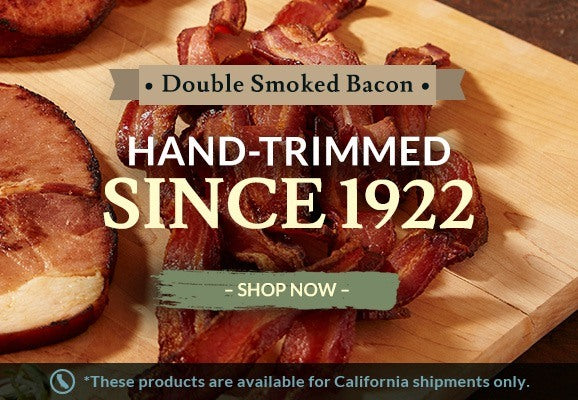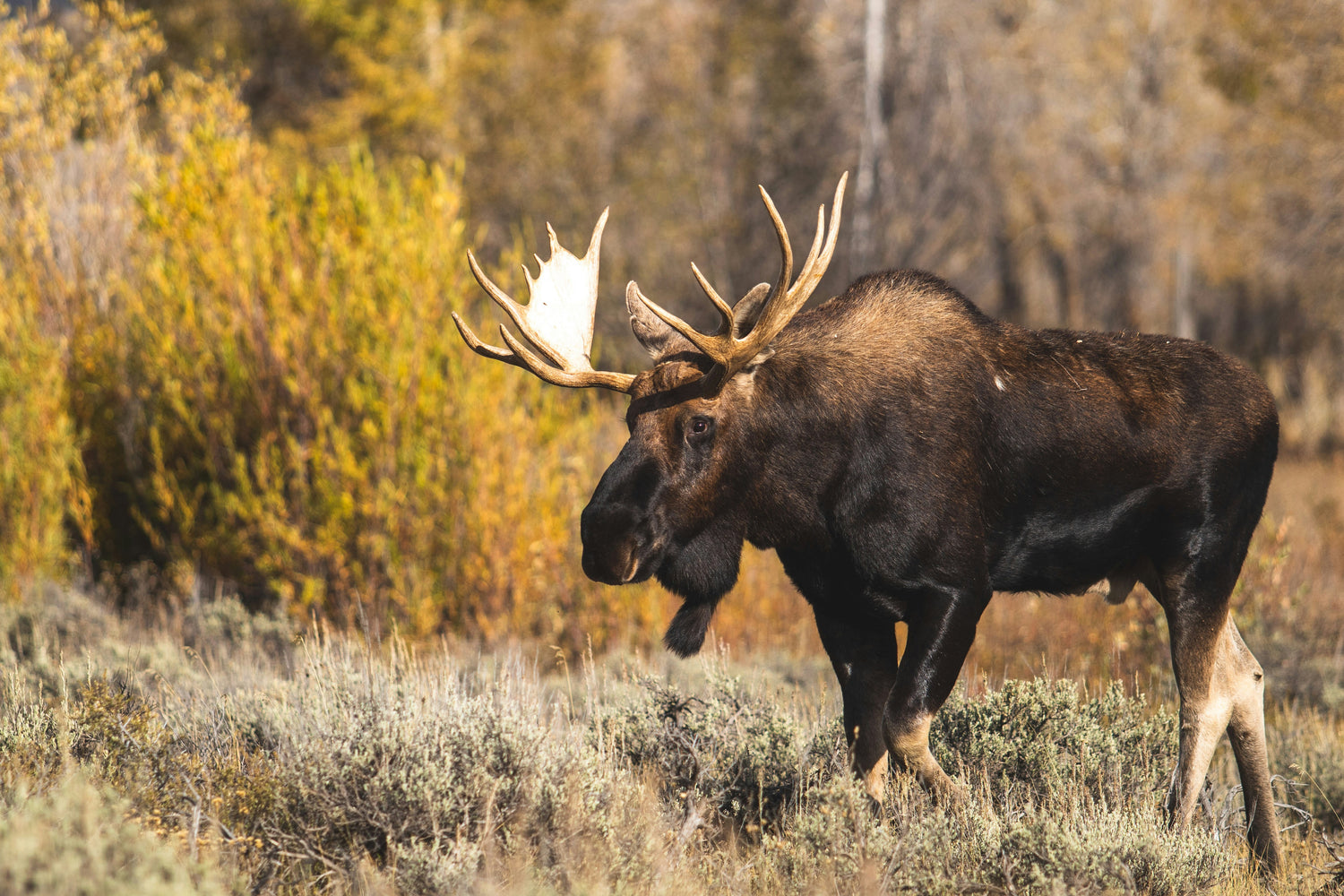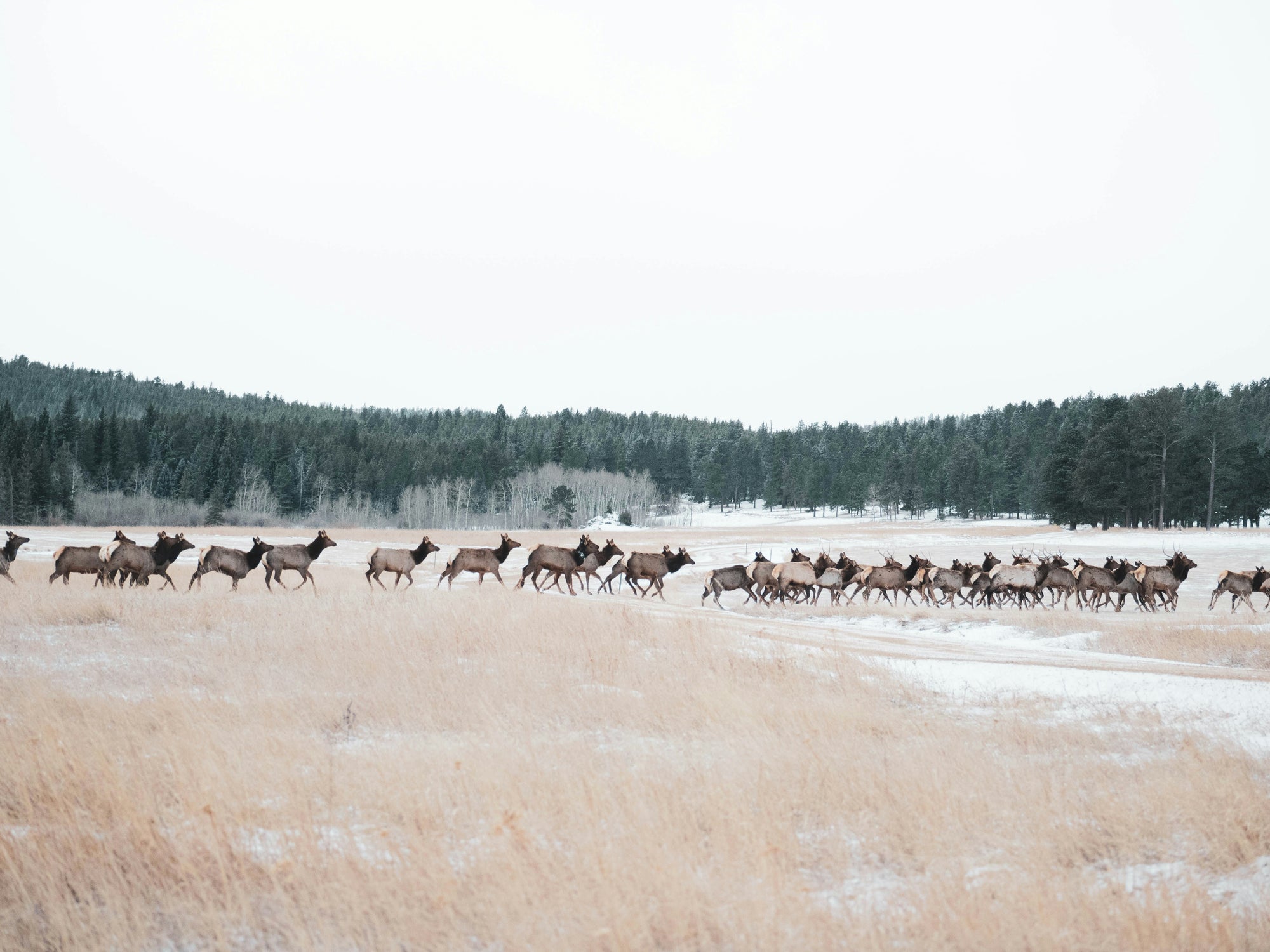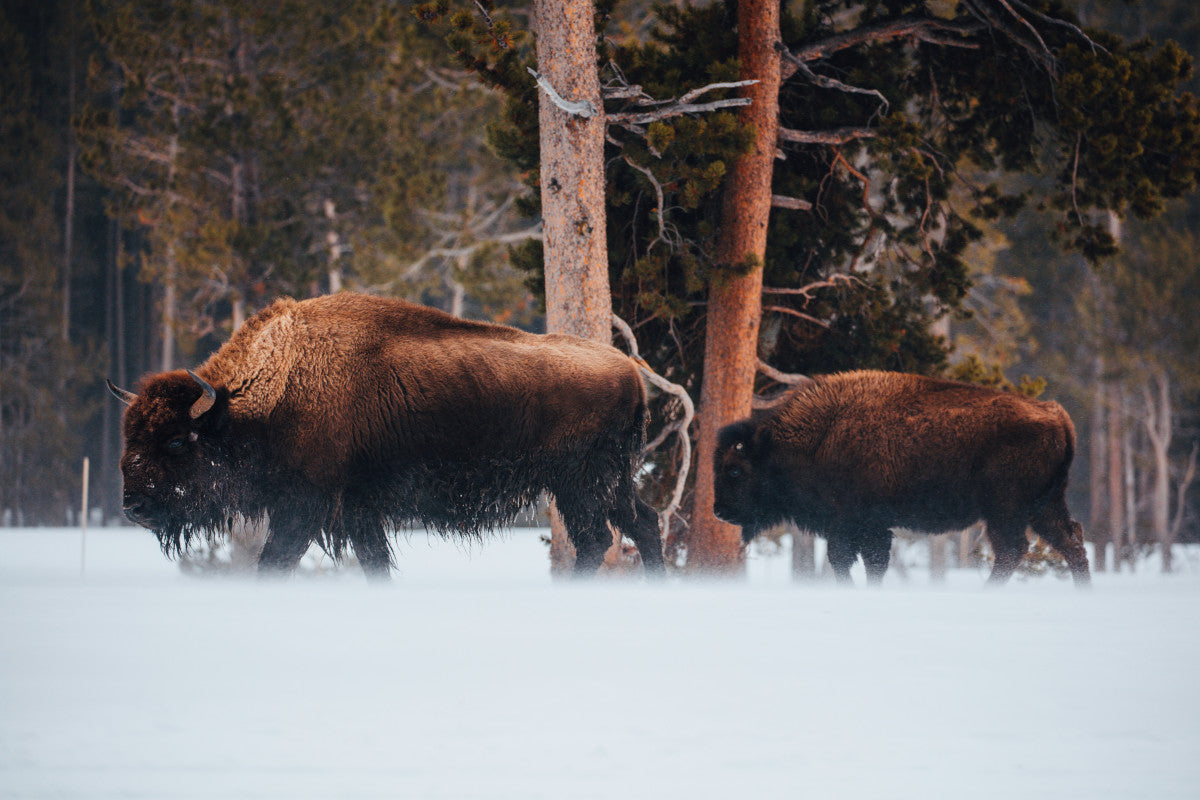In the savory universe of jerky, aficionados know there's much more to savor than just the standard beef or turkey varieties. Among the more adventurous choices, elk and moose jerky emerge as intriguing beef jerky alternatives
Each has its own unique flavor profile and textural nuance. But when it comes to picking a favorite between moose vs elk jerky, the choice isn't always clear-cut.
Elk jerky brings a lean, rich taste coupled with a tender chew, owing to the animal's diet and active lifestyle in vast habitats ranging from forests to mountainous regions.
Moose jerky, on the other hand, presents a bolder and earthier flavor, reflecting the size and solitary habits of these majestic animals. Both types provide a taste of the wild that differentiates them from other meats in the jerky family.
As you explore the subtle and less subtle differences between these two types of jerky, we’ll also introduce you to the pinnacle of gamey jerky delights showcased by Mahogany Smoked Meats, your trusted choice for premium jerky online!
What’s the Difference Between Moose and Elk Jerky?
Before we compare and contrast moose vs elk jerky, we need to provide a bit of background information and explain the unique characteristics of each one separately.
Overview of Moose Jerky
Moose jerky is made from the meat of the moose (Alces alces), which is the largest member of the deer family.
You'll recognize these towering animals by their dark brown coats and the impressive, palmate antlers found on bulls, which are mature male moose. They typically lead solitary lives in forested areas across the Northern Hemisphere.
When it comes to jerky, moose provides a rich, savory flavor that is distinct among game meats. Its high-protein content is coupled with a low-fat composition, making it a satisfying, lean snack. Here are some of the characteristics of this variety:
- Flavor Profile: Expect a hearty and robust taste, with less gaminess compared to other wild game.
- Texture: Due to its lean nature, moose meat yields a firm jerky that chews longer, delivering a full flavor experience.
- Health Aspects: Rich in iron and vitamins, with fewer calories from fat, it's a nutritious option for maintaining energy levels during outdoor activities.
When you indulge in moose jerky, you're not only enjoying a tasty treat but also getting a piece of wilderness adventure. It captures the essence of the wild in a snack that's both portable and packed with flavor.
Whether you're out hiking, camping, or simply in need of a protein-rich snack, moose jerky can be a satisfying choice. But let’s look at the other half of the moose vs elk jerky debate…
Overview of Elk Jerky
Elk jerky is a savory snack made from the lean meat of the Cervus canadensis, commonly known as elk. These large mammals, especially the impressive bull elk, are notable for their majestic antlers and are often found roaming in herds throughout North America.
When bringing an elk jerky recipe to life, the meat is first trimmed of any excess fat to ensure a lean final product. Just as with the best cut for beef jerky, using the best cuts of elk meat is paramount to a tasty, healthy final product. The actual dehydrating process matters too - this includes what temp to dehydrate jerky, how long to dehydrate jerky, how thick to cut jerky, and more.
Due to the low fat content inherent to elk meat, the jerky can be quite lean, making it a healthier option for those looking to minimize their fat intake. Unlike beef, elk meat possesses a distinct, often described as “gamey” flavor that adds a unique twist to the jerky experience.
To craft elk jerky, the trimmed meat is sliced, marinated in a blend of seasonings to enhance its natural taste, and then dried. The drying process can be done through traditional air drying, or by using dehydrators or ovens. The result is a chewy, richly flavored snack that's both high in protein and low in calories.
You may encounter various flavors, from teriyaki to spicy, each complementing the elk meat's robust taste. With its combination of savory taste, low fat content, and high protein, elk jerky makes for an excellent snack option for outdoor activities or a nutritious quick bite during your busy day.
Moose vs Elk Jerky: Key Differences in Taste, Nutrition, and More
When exploring the world of jerky, you'll find moose and elk varieties offer distinct experiences in flavor and nutrition. Our advice? Try both for yourself and see which you prefer!
However, we’ll offer a bit more clarity on where each one has an edge to help you choose which might suit your palate and dietary preferences best.
Taste and Texture
Moose jerky typically presents a rich, gamey flavor that's more pronounced than elk. The taste is often described as earthy and intense, with a slightly sweet aftertaste. Texture-wise, moose meat is denser and tougher, which translates to a chewier jerky.
On the other hand, elk jerky carries a milder game flavor compared to moose. Its taste is closer to beef but with a unique twist that's less gamey and often preferred by those new to game meat. In terms of texture, elk jerky is leaner and tends to be slightly more tender, providing a less chewy bite.
Nutritional Profile
The nutritional side of things reveals a distinct advantage to elk jerky over moose jerky in terms of protein availability and fat content. Here’s how it breaks down:
Moose Jerky:
- Calories: Lower
- Fat: Higher (Saturated and unsaturated fat levels can vary)
- Protein: Slightly less than elk
- Vitamins/Minerals: Good source of B Vitamins, iron
Elk Jerky:
- Calories: Slightly higher
- Fat: Lower
- Protein: Higher, with all essential amino acids
- Vitamins/Minerals: Rich in B Vitamins, phosphorus, zinc
Both are high-protein, low-fat options compared to traditional beef jerky nutrition, with elk being slightly leaner. In fact, it’s one of the healthiest jerky types you have at your disposal.
You can learn more about the elk jerky nutrition facts in our blog, or compare them with buffalo jerky nutrition facts for more context.
Cost and Availability
As you start to weigh the cost of moose vs elk jerky, you’ll quickly discover that both cost more than their traditional beef jerky counterparts. So, why is jerky so expensive? It’s because both of these varieties are considered exotic, and harder to come by.
Still, one has an edge here as far as being more accessible and affordable - and that’s elk. These animals exist in larger populations and there are more established farming practices. Moose jerky is less common and can be more expensive, reflecting the challenges of sourcing the meat.
Longevity
Now, you may be wondering, how long does jerky last in comparing moose vs elk jerky? Both moose and elk jerky, when properly dried and stored, have long shelf lives. They do not differ significantly in longevity, with both lasting up to:
- 2 months (at room temperature)
- 6 months (refrigerated)
- 1 year or more (frozen)
You can learn more about how to store jerky to maximize its shelf life in our blog if you’d like. But at this point, let’s look at the key takeaways from this comparison of elk jerky vs moose jerky…
So, Which is Better: Moose Jerky or Elk Jerky?
Just as with the comparison of smoked jerky vs dehydrated jerky, one isn’t necessarily “better” than the other - it all comes down to what matters most to you in a snack.
Your preference will depend on whether you're after a stronger gamey flavor and denser texture (moose), or a milder taste and tender bite (elk). Consider your taste preference and the nutritional aspects that align with your dietary goals when making a choice.
The truth is, you can’t go wrong either way. Both of these treats offer a satisfying break from the norm. Let’s see how they stack up to other types of jerky…
Comparing With Other Jerky Types
Compared to venison jerky, both moose and elk offer a less gamey taste. Venison tends to have a stronger wilderness flavor. When contrasted with beef jerky, moose and elk are leaner options and offer a different nutritional profile, with lower fat content and unique mineral benefits.
Browse all our jerky comparisons below to learn more about the wide world of jerky:
- Buffalo jerky vs beef jerky
- Pemmican vs jerky
- Carne seca vs beef jerky
- Turkey jerky vs beef jerky
- Biltong vs beef jerky
- Pork jerky vs beef jerky
- Deer jerky vs beef jerky
However, it’s time you discovered the best selection of jerky online, whether you want to take a walk on the wild side with something like elk or stick to the basics. Here’s why we’re your trusted source for the best elk jerky, the best fish jerky, the best buffalo jerky, or anything in between…
Experience the Pinnacle of Exotic Jerky at Mahogany Smoked Meats!
Mahogany Smoked Meats offers a jerky experience that eclipses the commonplace. Our small-town Bishop smokehouse boasts a legacy dating back to 1922, thriving on a tradition of deep log-pit smoking with dense, fallen mahogany logs, seven times heavier than hickory, curating a taste that's unparalleled.
Our artisan smoking process ensures that every slice of jerky is rich with the smoky essence of mountain mahogany, providing a snacking experience that's both gourmet and unimaginably delicious. Smoking elk with mahogany-infused smoke crafts a flavorful adventure bite after succulent bite.
Venture into the realm of the unique with our elk jerky for sale, a fan favorite available in two enticing flavors: black pepper and teriyaki. Our elk jerky is celebrated for its moist and chewy texture, promising a superbly artisan snacking experience.
Elevate your taste buds with this taste adventure, where our jerky is crafted in small batches, ensuring the highest level of quality. With no preservatives, MSG, or nitrites, you snack healthily every time you indulge in Mahogany Smoked Meats.
Your snacking doesn't just stop at elk, though. Explore our diverse selection of meats ranging from beef jerky for sale to wild boar jerky for sale, buffalo jerky for sale, fish jerky for sale, and a whole lot more.
Whether you're seeking a midday snack or a post-workout pick-me-up, our fast shipping and 100% satisfaction guarantee turn each purchase into a delightful experience.
So, rediscover the art of snacking with Mahogany Smoked Meats. Embark on a taste adventure - each bite promises an exquisite journey through flavor and tradition.
Bringing Our Moose vs Elk Jerky Comparison to a Close
When it comes to choosing between moose vs elk jerky, your personal taste preferences play a significant role. Both types of jerky offer unique flavors and textures that cater to different palates. Here are the key takeaways from this conversation:
Moose Jerky:
- Taste: Rich, robust, and slightly gamey
- Texture: Dense and chewy
- Quality: Often leaner, with a distinct taste reflective of its wild environment
Elk Jerky:
- Taste: Mild, with a savory flavor less intense than moose
- Texture: Tender, easier on the jaws
- Quality: Typically well-marbled, providing a juicy bite
When deciding on a recommendation, consider the unique qualities of each jerky type. For adventurous eaters looking to explore the bolder side of wild game, moose jerky is a must-try. If you're new to game meat or prefer a gentler introduction, elk jerky could be a better fit.
Want to learn more about the world of jerky? Explore our blog for insights on beef jerky calories, making jerky in air fryer, how to make fish jerky, can you make jerky from pork, can you freeze jerky, and more.
Otherwise, it’s time you discovered the best online beef jerky, elk jerky, or anything in between that’s calling your taste buds. Immerse yourself in a new experience at Mahogany Smoked Meats today, and you just might discover your new favorite savory treat.
